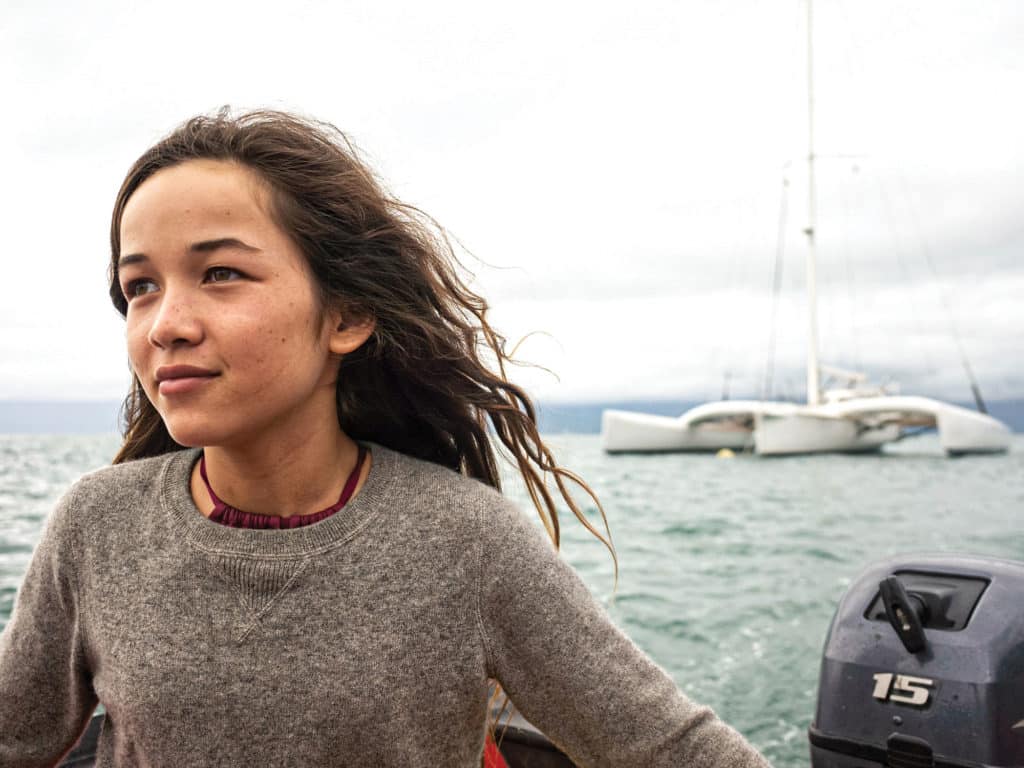
Gather round for the story of Thunderbird, a 49-foot cruising trimaran for a growing family with, yes, a half-dozen adventurous and athletic kids —a huge step up from the Open 40 monohull they used to call home…and a truly magic ride to the surf spots and rock walls where they all thrive.
After two days of air travel from Port of Spain, Trinidad, a layover in Paramaribo, Suriname, then to Amsterdam’s Schiphol airport, our motion finally came to a halt. The airport shuttle stopped in the arts district of Amsterdam Noord on a quiet street that ran between the former NDSM shipyard and a waterfront canal. My husband, James Burwick, our five kids, and our driver off-loaded bags out of the van onto a sidewalk next to docks adjacent to the Rhebergen Multihull Yachts yard. Sweet-smelling summer wildflowers taller than my three youngest children stretched along the verge; the sun was shining, butterflies fluttered, and bees were buzzing.
On the ground next to us, our entire lives were packed into four duffel bags, one tool bag and a camera bag. The kids each carried a backpack with their personal belongings. We told them they could bring from our former boat, an Open 40 called Anasazi Girl, to our new yacht—a completely different one in almost every way—anything they could fit into bags and carry on their backs.
We looked through the chain-link fence. All of us were wild with excitement as we stared at the big white trimaran floating on the canal with blue Victron Energy logos on the amas and the name Sound of Silence on the hull. There before us was our new home and sailboat.
It was late June 2019 when we’d found her: a Peter Bosgraaf-designed Gaviota 49 cruising tri. The seven of us had been living aboard Anasazi Girl like sardines at Crews Inn Marina, in Trinidad’s port of Chaguaramas. Over a year had passed since we had made any significant sailing passages.
On so many fronts, things were about to change dramatically.
Where to begin?
So many amazing life experiences had unfolded in the five years since breaking Anasazi Girl’s mast in the Southern Ocean in 2014. After more than two years of hard work in the high latitudes of South America, we’d successfully earned the funds needed to pay for the replacement rig and cost of the epic transport from Watsonville, California, to Puerto Williams, Chile. During our dismasted period, we became residents of Chile, formed a Chilean LLC for our marine services, yacht brokerage and photo business, and I gave birth to my fourth child, Tarzan.
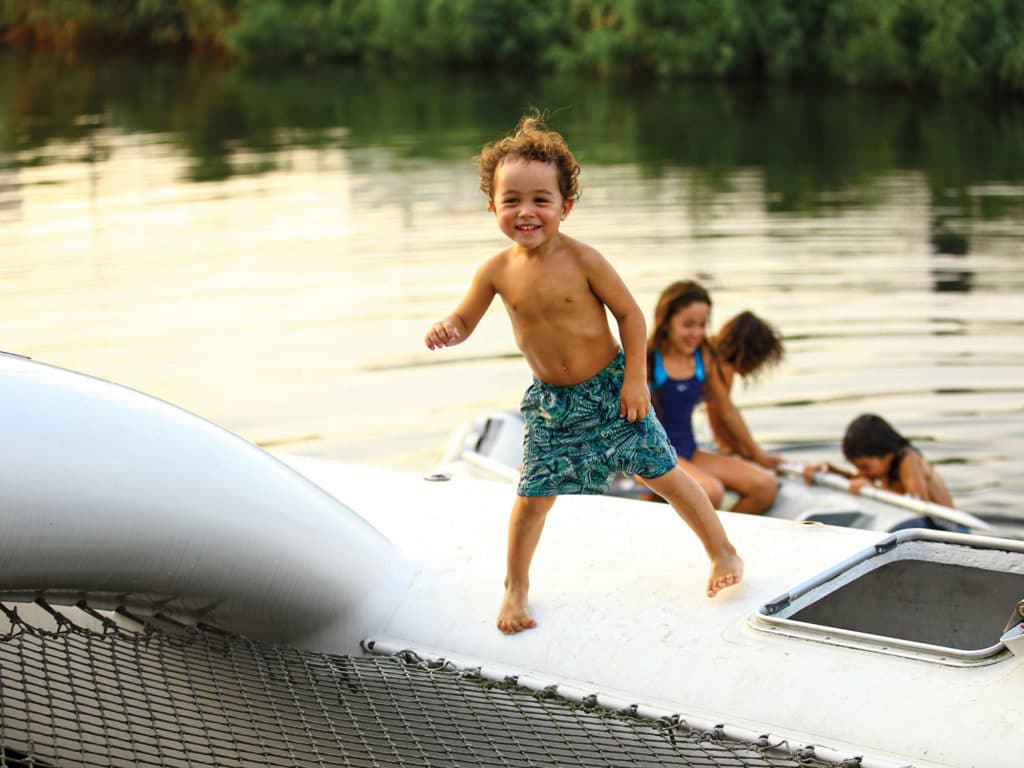
Miraculously, Buzz Ballenger’s alloy rig and two pallets of equipment and sails had arrived safely and undamaged. With the help of the Armada de Chile—the Chilean navy—we successfully stepped the replacement rig on the existing carbon mast stump in November 2016.
After sea trials in the Beagle Channel and completing our voyage prep list, we were ready to depart. In March 2017, we sailed with our family along the entire Atlantic coast of South America from the Beagle Channel to the Caribbean Sea. Our four kids—Tormentina, Raivo, Pearl and Tarzan—were ages 8, 6, 4 and 11 months, respectively, when we departed.
While en route from Rio to the Caribbean, we crossed our old track from 2011 off the coast of Recife, completing our circumnavigation with our two oldest kids. A milestone.
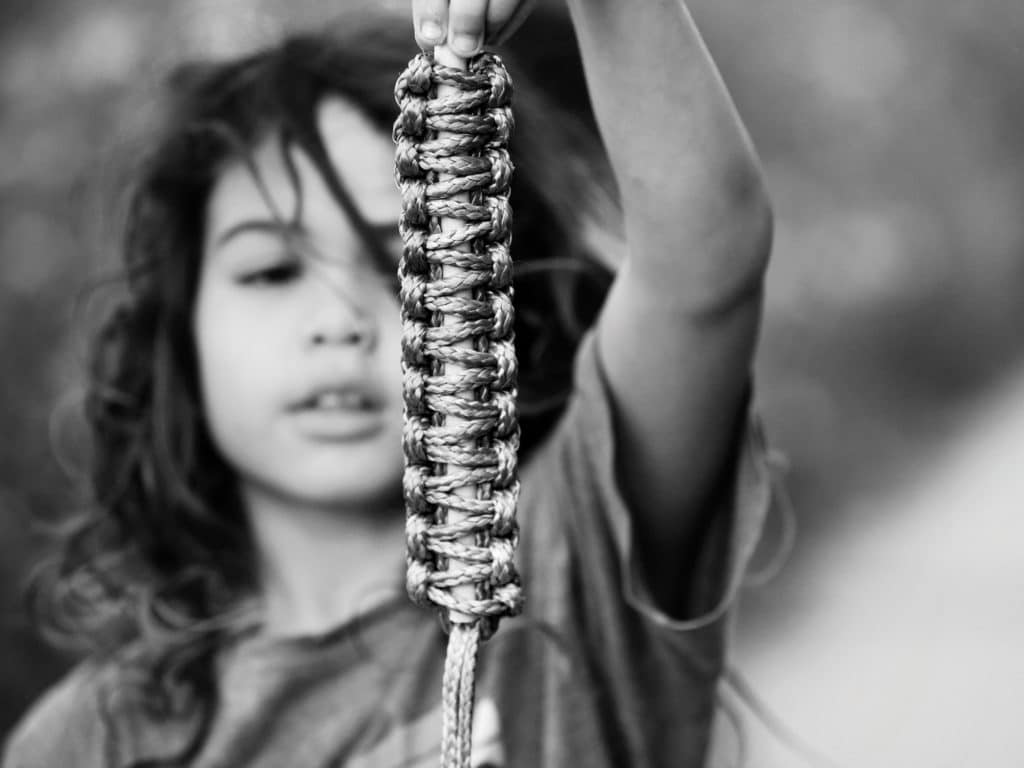
From July 2017, when we arrived in Grenada, to March 2018, we did a refit and delivery, as well as a brokerage project that allowed our family to keep sailing on a bigger boat: a Kiwi-owned, Chuck Paine-designed Bougainvillea 62. We took the Bougainvillea halfway down the coast of South America, from the Caribbean Sea to Rio de la Plata, off the south coast of Uruguay. The vessel was sold underway to a buyer we showed the boat to in Salvador, Brazil. Our bags were rolling down the dock two days after arriving in Punta del Este, Uruguay, and we were soon en route by buses and planes back to Chile.
Our kids are exceptional athletes, so after the delivery, we invested in private rock-climbing and surfing lessons with pro instructors. The kids climbed in the mountain towns of El Chalten, Argentina, and Puerto Natales, Chile, and learned how to surf the waves surrounding the famous Chilean break at Punta de Lobos. We dealt with residency papers, Chilean taxes, drivers’ license renewals, our LLC, and reporting Tarzan’s birth to the US Consulate so he could get a US passport in addition to his Chilean one.
By the end of May 2018, business was in order, we were back in the Caribbean for hurricane season, and I was pregnant with our fifth child. We stayed aboard Anasazi Girl, now tied up at Camper & Nicholson’s Port Louis Marina in St. George’s, Grenada. The marina’s high-speed, on-the-dock cable internet made working in our virtual offices efficient. We carefully lived on the income from the Bougainvillea and my photo sales, keeping constant watch on any tropical systems that might force us to move south to Trinidad.
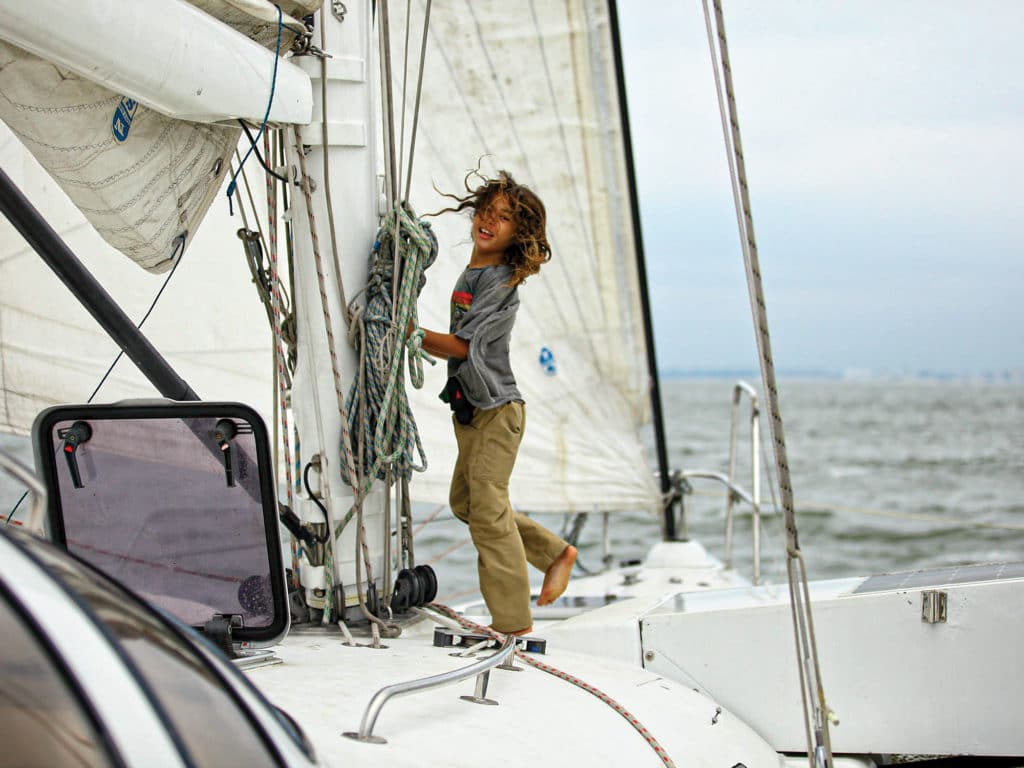
Port Louis Marina facilities were clean and secure, with an ATM, bakery, restaurants, shops and various marine businesses on the property. Six on the boat was tight, but after caring for someone else’s vessel and renting funky short-term housing in South America, it was nice to be back in our own space. We appreciated the low-maintenance and functional simplicity of Anasazi Girl. Lack of indoor space was balanced with a full-time, active outdoor life.
The kids wanted to surf bigger waves and climb higher-grade stone routes. They got strong, lean and fit, swimming laps in the pool, in inland freshwater holes, and snorkeling and freediving at Grand Anse Beach. The island was an excellent backdrop for creating outdoor and active kids’ imagery aimed at the photo department of a longtime supporting client, Patagonia Inc.
Because we had one more on the way, James was constantly working and scouring the internet for a bigger boat. Our circumnavigation was over. Thanks to the kindness of the owners of the Bougainvillea, we had been fortunate to prolong the gift of sailing with the family a bit longer, but now our sailing days seemed finished. Anasazi Girl was on the market, and though there were always interested parties, nothing serious materialized. With no sailing voyages planned and our funds slowly disappearing, it was not long before we began mentally rotting in port.
In October 2018, James flew to the Netherlands and France to help a client from Brooklyn inspect several boats, one of which he purchased. The funds from the sale provided us with just enough of a budget to fly to Chile and back for the birth of our daughter Jade that December. Like Tarzan, she held dual US/Chilean nationality. Afterward, James got a job managing the refit of a Chris White-designed Atlantic Cat 55 in Chaguaramas, and we returned to Trinidad.
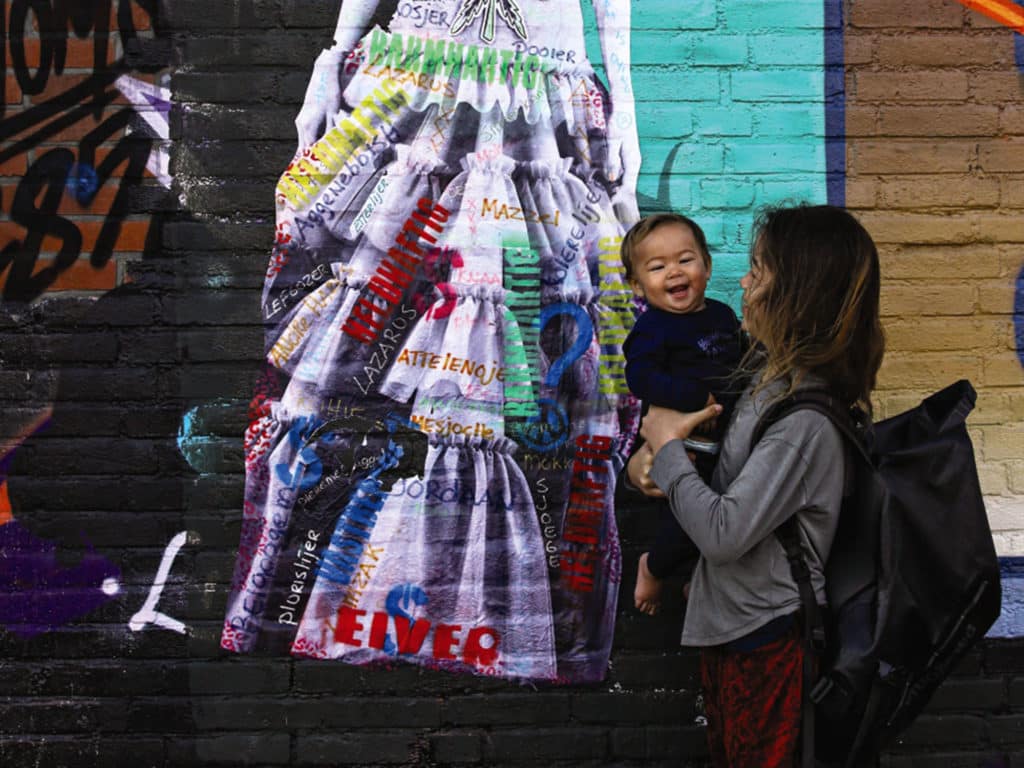
The project was estimated to take two months. We were totally unsure how we could pull it off aboard Anasazi Girl with seven people—after all, the boat had originally been designed for solo and shorthanded adventures—but decided we would make it work.
On arrival to Trinidad in February 2019, we relaunched the boat and got a monthly berth at Crews Inn Marina. Trinidad’s crime statistics seemed worse than two years previously. Despite many invitations from local friends to do activities outside the marina, we stayed mainly in the marina bubble. The facility provided us with on-site security, a pool, a fitness center, a couple of restaurants and a grocery store.
That year, there was also a drastic increase of Venezuelan immigrants seeking refuge in Trinidad. With sadness, we read about the desperation and exploitation they experienced on both sides of the border. We met many Venezuelans waiting outside the port’s immigration and customs clearance offices. With delicacy, we asked what was happening. Some were more open than others about sharing their experiences. We watched as they stocked up on basic life necessities such as rice, flour, toothpaste, diapers, toilet paper, salt and sugar before heading back to Venezuela with supplies.
All these encounters made us feel grateful. Despite whatever hardships we personally experienced in our lives, the reality was we were so fortunate and privileged. Lack of personal space was nothing. We had work, freedom and the ability to feed our kids.
By the end of June 2019, the first phase of the Atlantic 55 refit was coming to a close. And we were all ready for a change. The seven of us living in a such a small space was bordering on ridiculous. I am sure the other marina guests thought we were nuts. We loved our Finot-Conq Open 40. She had allowed us to make a truly memorable circumnavigation with our older kids, especially the legs in the incredible high latitudes. But the reality now with so many people aboard was that we no longer had the capacity to carry enough food and water to make any long passages.
We were done with being nonsailing liveaboards tied to marinas. We wanted to get our family off the dock, on the hook, and sailing again in a completely different cruising mode.
Because we were seeking minimalism, creature comforts were not so important, but we did want the ability to carry a few things, such as a dinghy, surf boards, a small sailboat, or a couple of kayaks. Adequate water, fuel, food and off-grid capacity were necessities. Pubescent teen years were just around the corner for our oldest kids; more space and privacy would soon be critical.
We mentally struggled. With the refit funds we’d earned, we could instead invest in an undeveloped parcel of land or make a down payment on a fixer-upper commercial property in Chile. It would be a practical thing to give to our kids for the future. We thought hard about it but just could not do it. It did not feel like this would be choosing to live la vida loca.
James was 65, and it felt like our window for sailing together would soon close. For him, there was no “later.” If we did not go now, then maybe we would never voyage as a family again. If we went now, then there was hope that he could pass on whatever knowledge of seamanship he had to the kids while he was still mentally and physically sharp.
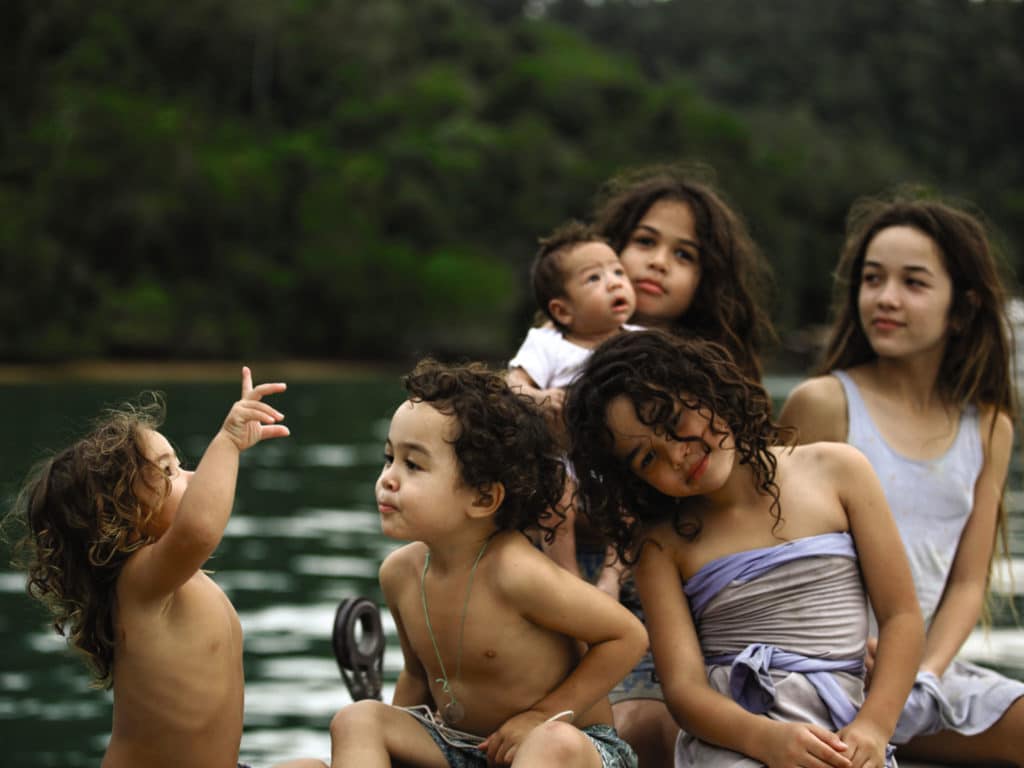
We stopped looking at real estate and dived into an intensive search for a new boat. James found a trimaran in Madagascar and a proa in Australia. The proa was not a vessel we could imagine circumnavigating aboard, but we did see a plausible project of sailing between Australia and Indonesia, a workable scenario where our kids could be full-time surfers.
With the trimaran in Madagascar, we saw the potential for having a really wild cultural experience. I was turned off by the idea of bringing my kids to a place where child-prostitution tourism was prevalent, but the Malagasy history, culture, landscape and unique fauna were all positives. With that vessel, we could do a South Atlantic loop between South Africa, St. Helena and Brazil.
Either way, the reality was that the current condition and seaworthiness of the boats were unknown until we committed to going and looking. Both felt like somewhat of a gamble—in time more than money—and a step down from the incredible sailing machine that we already had. But we had to do something. Time was ticking; the moment had come to make a change for our family.
James’ friendship with sailors and marine-industry pros around the world has always been a great sounding board for problem-solving, ideas and advice. One friend in particular, a Dutch solo multihull sailor named Henk de Velde, told him that he honestly didn’t like either of the boats on our wish list. He knew we did not want a full refit project, that we just wanted to go sailing.
He asked James to wait on moving forward. He thought there might be a boat in the Netherlands that would work for our family. He was sure it was a strong, seaworthy, go-anywhere vessel. He believed we could make a circumnavigation on it, and there would be enough space that we could stretch into it at least for a few years. It was not on the market yet, but he had a hunch that it might be soon.
We waited to hear from him, and true to his word, Henk soon sent us information about a 49-foot trimaran called Sound of Silence (aka SOS). Immediately after seeing photos and reading the specs, we felt like it just might be the perfect boat. She was a 1996 design but had great lines and appeared to be a super-sexy-looking sailing machine. Dutch-built, she was made of fiberglass, epoxy and strong plank. Beams were constructed of carbon, glass and aluminum, and she had a carbon mast with Navtec rigging. The tri was just shy of 50 feet long and very wide, over 36 feet, but she had a Farrier folding ama system that shrank the beam to a little less than 20 feet, allowing for ease of haulout, storage and maneuvering in tight spaces.
All living space was in the center hull, and there were three cabins that could fit a total of six crew—still a bit tight for a family of seven but palatial compared with an Open 40. All the systems had top-of-the-line gear, and for certain it felt like we could potentially make a smooth transition from one incredibly cool boat to another.
We were unsure that we could financially pull it off, both in the initial purchase price and the ongoing maintenance. But we had an undeniably good feeling about her. We decided to follow our instincts and pursue it, figuring we had nothing to lose by trying. We asked Henk to go to Amsterdam to inspect the tri for us. Upon returning, he reported that it was in excellent condition and just needed a little TLC. He sent us updated photos and was certain it was sound enough that we could get on board and start sailing right away.
Trusting him, we made an offer on SOS sight unseen, with the funds from the refit project as a down payment and a loan from the owner of the Atlantic Cat for the remainder (secured with Anasazi Girl as collateral). We were incredibly nervous to live beyond our means but believed somehow we could pull it off until Anasazi Girl sold.
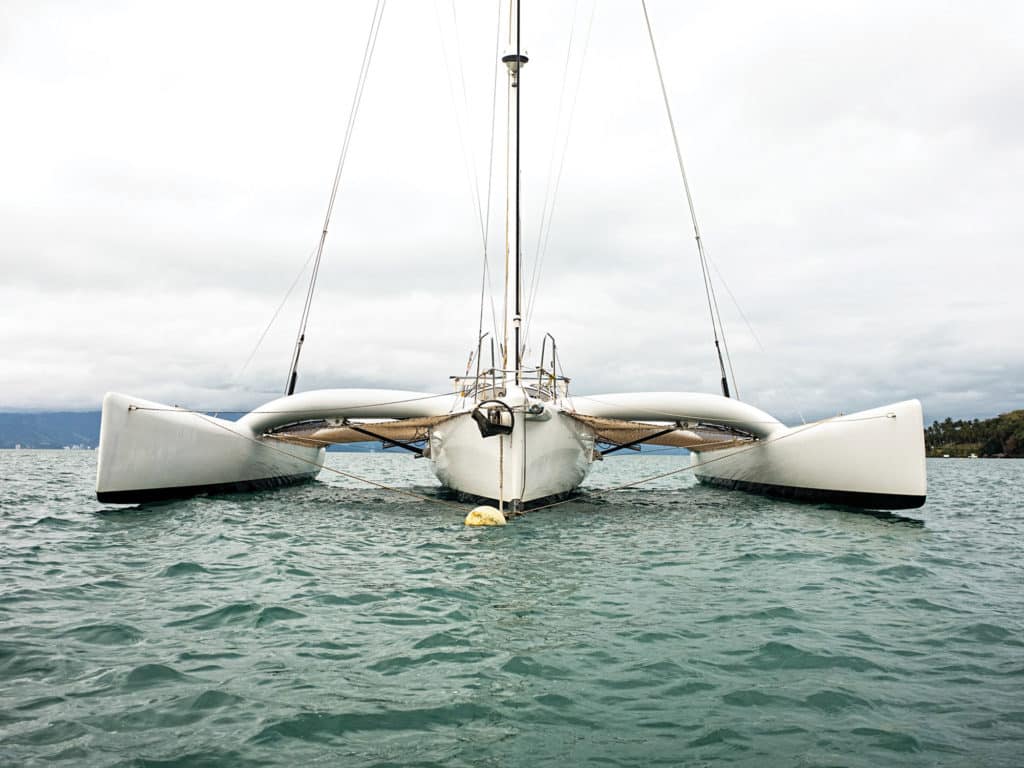
Unbelievably, our offer was accepted. It would be binding, contingent on James’ personal inspection of the boat.
The first week of July 2019, James flew to Amsterdam for two nights to see the boat. He hauled her out, called me, and told me that all the sailing gear looked excellent, functional, and in good condition. The systems on the boat were much more complicated and required a lot more maintenance than Anasazi Girl, but he felt confident we could manage the work or simply not use the systems that were not critical for sailing. After all, we had been “camping” aboard Anasazi Girl for the previous eight years. The well-maintained vessel had only two owners for the past 20-plus years and had been sitting in a freshwater canal most of its life when not at sea. The four separate compartments of the amas were for storage but could potentially become in-port berths for the older kids.
With my approval, he signed the final purchase and sale contract papers, then flew back to Trinidad.
We dropped the price of Anasazi Girl to cover the balance of the loan we had taken, and spent a week preparing for haulout, decommissioning and long-term storage. We packed our bags, then booked flights to Amsterdam via Suriname. Our lives were about to seriously change.
Now here we were, teleported from the Caribbean tropics to the Northern European summer. I’d spent the previous couple of weeks looking with excitement at photos from Henk, the broker, and even an old Google Earth satellite image of the vessel on the dock. Our plane landed two days before my 42nd birthday, and this was an amazing present.
My stomach was filled with joyful anticipation as we walked through the gate. The kids ran down the docks, jumping in pure bliss on the trampolines.
She was impressive. Despite being an older design, Bosgraaf’s lines made her a classic and timeless beauty. Having no experience with a trimaran, I had no idea how we were going to sail the boat, nor even any idea of how we would move the massively wide beast out of the canal. SOS looked as though she had been parallel-parked like a compact car on a one-way city street into her berth at Rhebergen’s.
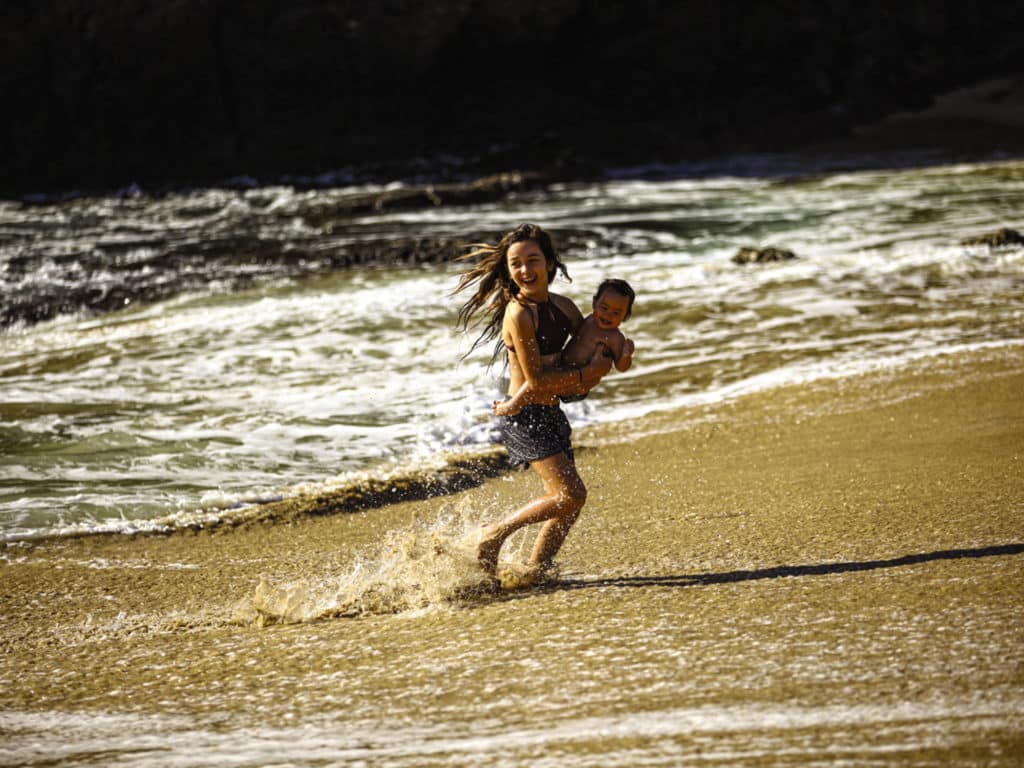
All of this we would figure out with time. The reality was we had been given a true gift. We were so grateful to Henk who found the boat for us, our friend Colin Dykstra (the owner of the Atlantic 55 who loaned us funds), Bosgraaf for his brilliant design, and to Reinout Vader (founder of Victron Energy and the owner of Sound of Silence) for giving our family the gift of sailing.
Vader allowed us to move aboard before the transfer of funds was complete and offered to go out for a daysail when we were ready. A few days later, funds were dispersed, papers signed and in order, and we were officially the new owners. We renamed the boat Thunderbird. Our first night aboard, my oldest son, Raivo, was so used to sleeping on a hard surface that he got out a camping pad, laid it down and slept on the floor! Not only did we have mega cushions, but we had space, both inside and out.
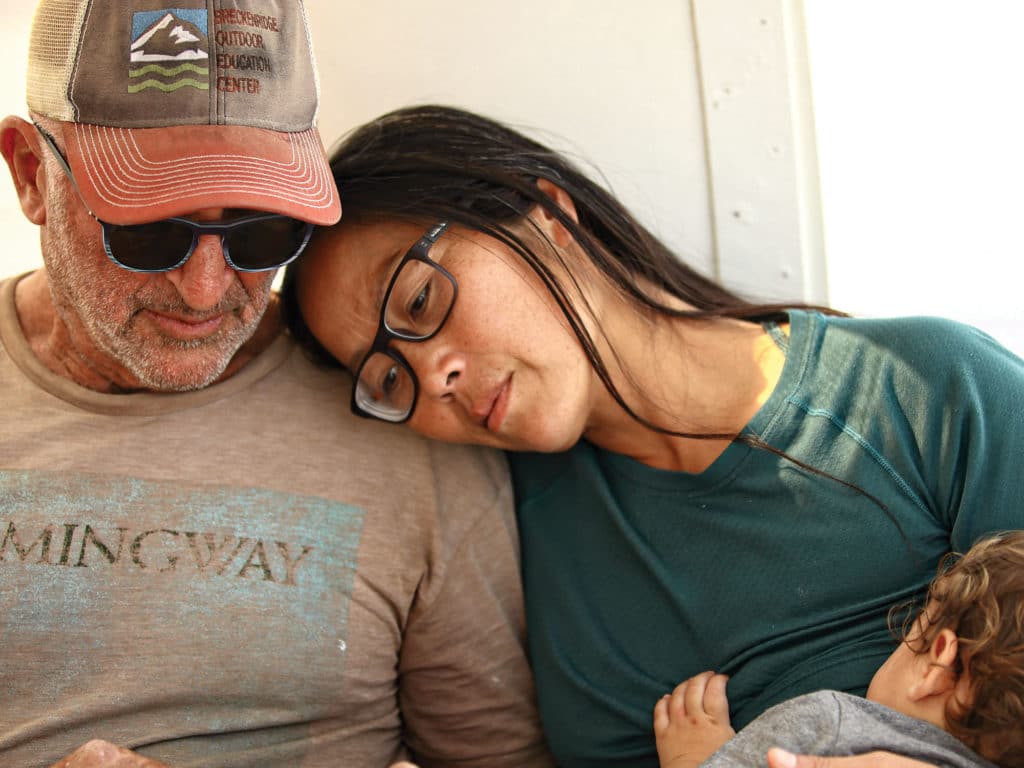
The creature comforts were a bit overwhelming: a microwave, two-burner induction cooker, freezer and fridge. Hydraulic systems folded and unfolded the amas; lowered and lifted the boom, centerboard and rudder; and controlled the bow-thruster, windless and several winches. Three sources of power generation charged the boat’s lithium batteries: an alternator on the 51 hp Yanmar, a WhisperGen DC generator (serving also as a hot-water and space heater), and eight Solbian 50-watt solar panels. Wiring was 24-volt, and Thunderbird had a Victron Multiplus inverter for controlling charging and converting to 220-volt AC.
We were now in serious pump land, with a big Spectra watermaker, indoor and outdoor shower, 110 gallons of water, 158 gallons of diesel, and more than 50-gallon holding tanks. The navigation system included two modern B&G Zeus 3 chart plotters with AIS and radar; an older B&G processor; and Hydra 2 autopilots, speedos, compass and depth sounders. In our sail quiver was a 968-square-foot main and 538-square-foot jib from North Sails, and a spinnaker and gennaker from Incidences.
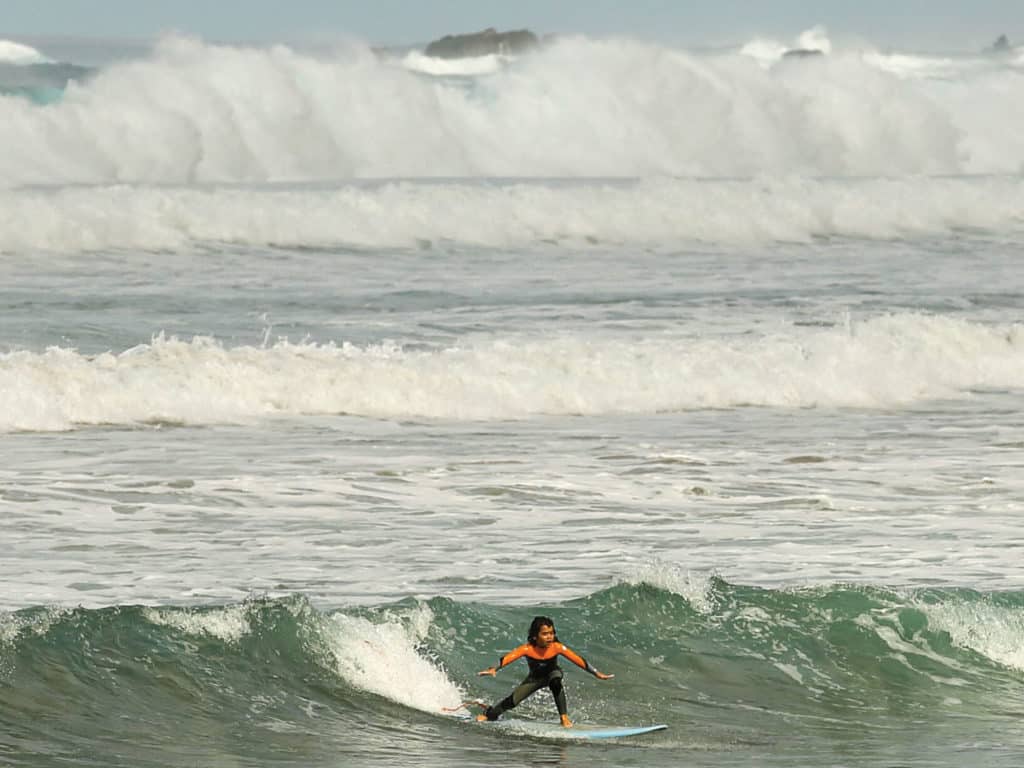
We spent the next month in Amsterdam waiting for reflagging, servicing and learning about all the systems of the boat. Henk gifted us his Rocna 72-pound anchor, which never failed him on his voyages with his trimaran, Juniper. New lettering and graphics were made for Thunderbird. We made our pre-voyage checklists and dived full time into our new project.
We did little tourism, only a token trip to the Rijksmuseum to see all the classics. We ate amazing Dutch bread, baked goods and cheeses, tried bitterballens (a deep-fried Dutch snack) and local beer. Our kids helped us with the workload, balanced with recreational time rowing around in a small dinghy in the canal, climbing fences in the boatyard, running wild on the docks, picking wildflowers, swimming in the canal, foraging for summer berries, and exploring the surrounding neighborhood.
We were most definitely in Amsterdam. Across the canal from us was a cannabis cafe. Along the wharf was Rhebergen’s yard and the NDSM shipyard, which was now converted into a space for a hundred artists of all disciplines. Twice a month, the biggest flea market in all of Amsterdam (IJ-Hallen) was set up in the open-air outdoor spaces surrounding NDSM. Spray-paint art was encouraged, and we watched artists creating epic murals on the old shipyard buildings, the walls of which were sometimes completely transformed daily.
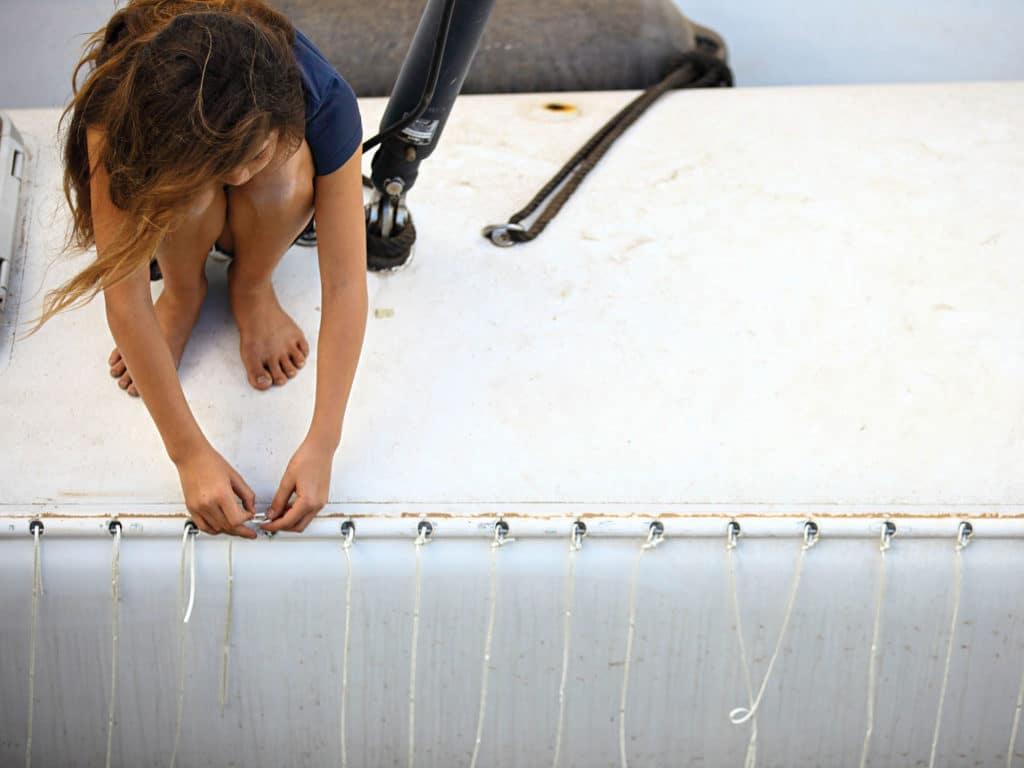
Though there was a marina in Amsterdam Noord and canal boats everywhere, our location was not within walking distance of all the yacht services and chandleries we needed. For this, we rented a vehicle and went to the port of IJmuiden at the end of the North Sea canal to get needed parts and new netting for our trampolines.
James met with Bosgraaf at his floating design office—a canal houseboat—in downtown Amsterdam. A couple of weeks later, Bosgraaf drove through the canals in a small powerboat he had designed to visit us aboard Thunderbird. He spent an afternoon answering questions and talking about the history of the boat.
Henk visited us weekly at Rhebergen’s and became a surrogate grandfather to my children, always bearing chocolate and local treats. We spent time with Laura Dekker—the Dutch sailor who was the youngest to sail alone around the world, at age 16—who we knew from New Zealand back in our Auckland days; we met her family, and she taught the kids how to sail a Pico.
Vader took us through the locks and bridge canals to the inland lake of Markermeer for a daysail. We learned the history of how he started Victron Energy, and watched in amazement at how he sailed the tri. “No using hydraulics,” he said with a twinkle in his eyes. Tall, fit and lanky at 75, he was still grinding winches with joy and making sail changes.
The US Coast Guard Documentation Center at last emailed us our paperwork, and we were ready to depart after five weeks. We set sail from Amsterdam in August 2019, making our way through the English Channel to the port of Caen, France. In September, we crossed the Bay of Biscay to the port of La Coruña, Spain, and got approved for a Schengen visa extension. In October, it was on to the Canary Island of Lanzarote, where the boat was hauled out in preparation for crossing the Atlantic. Two days after Christmas, we were again on the move, bound for Cape Verde, arriving in São Vicente just after the 2020 new year.
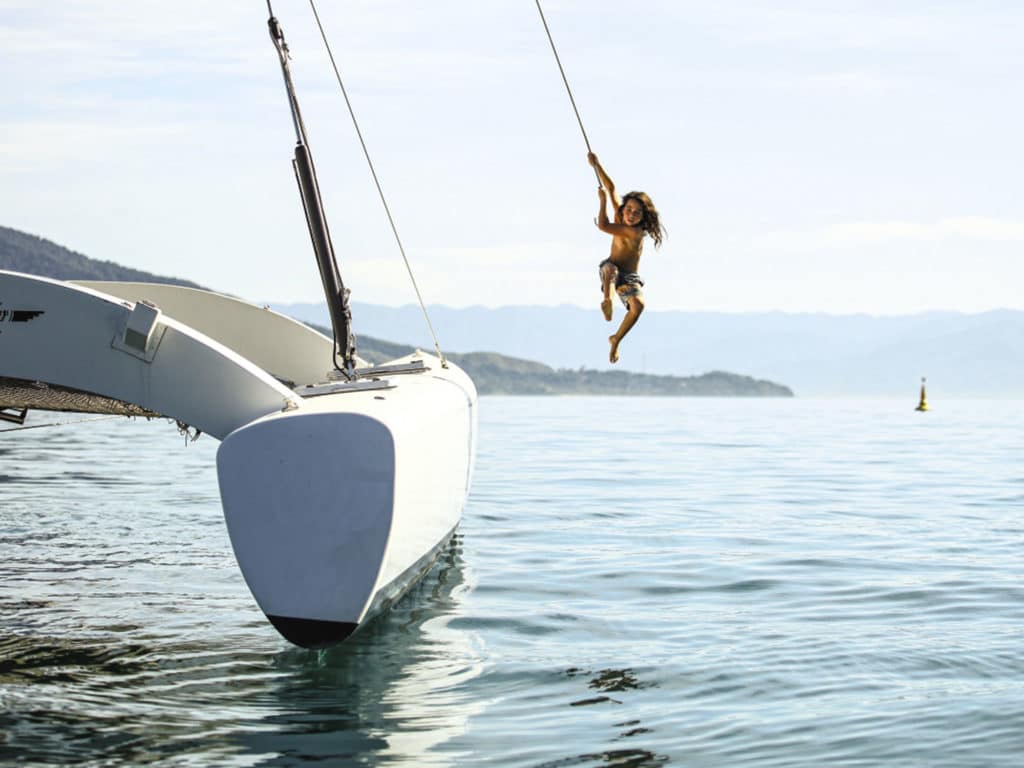
Departing from there the last week of January, we crossed the Atlantic in 10 days, arriving in the port of Cabedelo, Brazil, where we learned we were expecting our sixth child. We sailed south to Salvador de Bahia, Caravelas, and then Vitoria, when the COVID-19 pandemic broke out. We stayed there for almost two months in self-quarantine, doing repairs and maintenance on Thunderbird, awaiting the arrival of a used sail to replace the 20-plus-year-old delaminated main, watching as the early stages of the pandemic unfolded. We then decided to continue south, seeking isolated areas to cruise safely with our family.
While awaiting the birth of our next child, we explored the region between Ilhabela and Ilha Grande. Our son, Atlas, was born in late August of last year.
Our aim in raising our kids has always been to give them time with us, to choose their teachers and offer rich life experiences, to expose them to inspiring people, give them a practical understanding of the world, and support their passions.
Sailing is an excellent platform for all these things—and much, much more.
Saving for college educations, lucrative financial investments or a pile of material things is not part of our life goals. All of which would be wonderful to have, but we are just not savvy investors. For us to achieve even some of these things would require both of us working full time plus overtime, a sacrifice of time with each other.
Working really hard and then “gambling” all of it into impossible sailing dreams for the opportunity to experience the world is something we can do, and do together. It feeds our souls. We work and sail and do everything together. What we have is time to invest in our kids now, before they choose their own life paths. We don’t know everything, but we can teach them what we know and seek out teachers to show them the rest. The hope is they will have the confidence to follow their own outrageous dreams, and understand how to navigate the steps needed to achieve them.
Here in this voyaging life, we operate in our mode of feast or famine. We departed the Netherlands in a state of financial famine, but we felt positive and hopeful. Somehow things have always worked out, much of it having to do with our amazing friendships, leaving a clean wake in every port, and a lot of serendipitous moments.
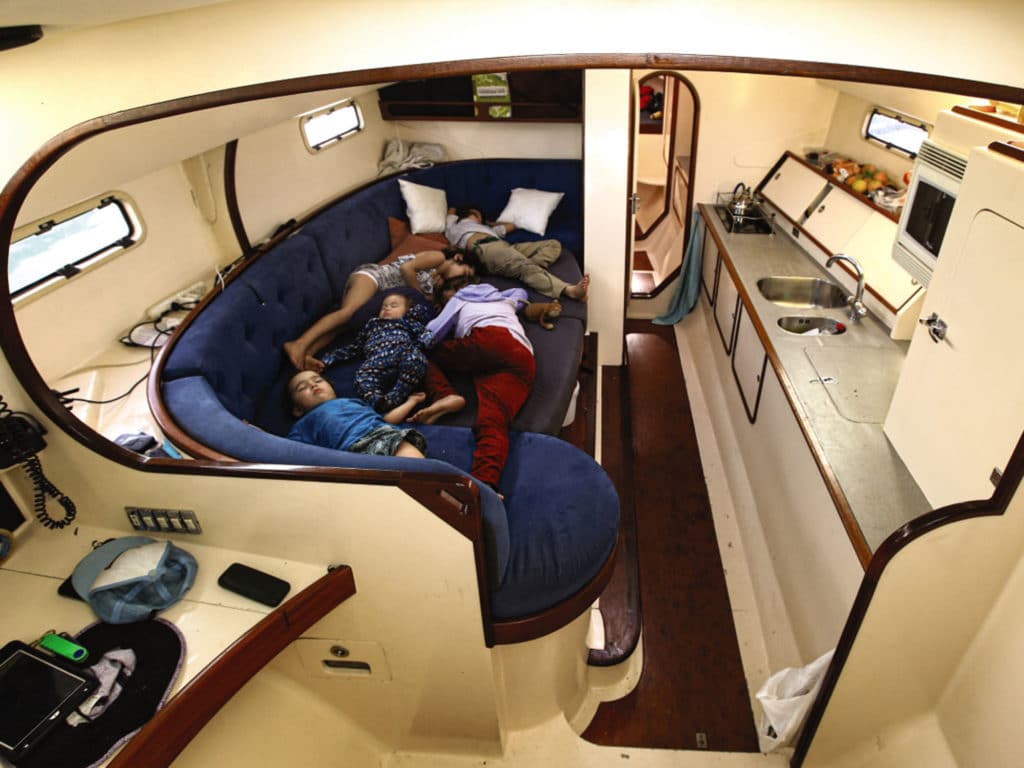
With Thunderbird, we feast on the sea, the world’s oceans fully open to us. We are officially a family of “rafters” with the ability to cross oceans, now able to live at anchor and get into shallow-draft spaces. What an unreal feeling to once again give our family the gift of sailing, taking with us all the rich things that accompany the life of a voyager.
Following the birth of Atlas last year, photographer/writer Somira Sao and her family are continuing to explore the coast of Brazil. She writes: “As a family of eight, we participated in the 70th Santos to Rio Race and the 2020 Ubatuba Troféu das Ilhas Race. For us, there are no shortcuts when it comes to learning about sailing. We are doing the miles, moving to a different anchorage every single day.”
A Freedom Machine Called Thunderbird
Peter Bosgraaf designed the custom-built cruising trimaran for a Dutch businessman named Willem Woestenburg, who fanatically sailed a Farrier 31 trimaran with his son, Rob. When Woestenburg hit the jackpot in the stock market, he decided to build a bigger tri with the same folding principle. Bosgraaf had just designed two smaller trimarans, so Woestenburg commissioned him to design his 49-foot tri.
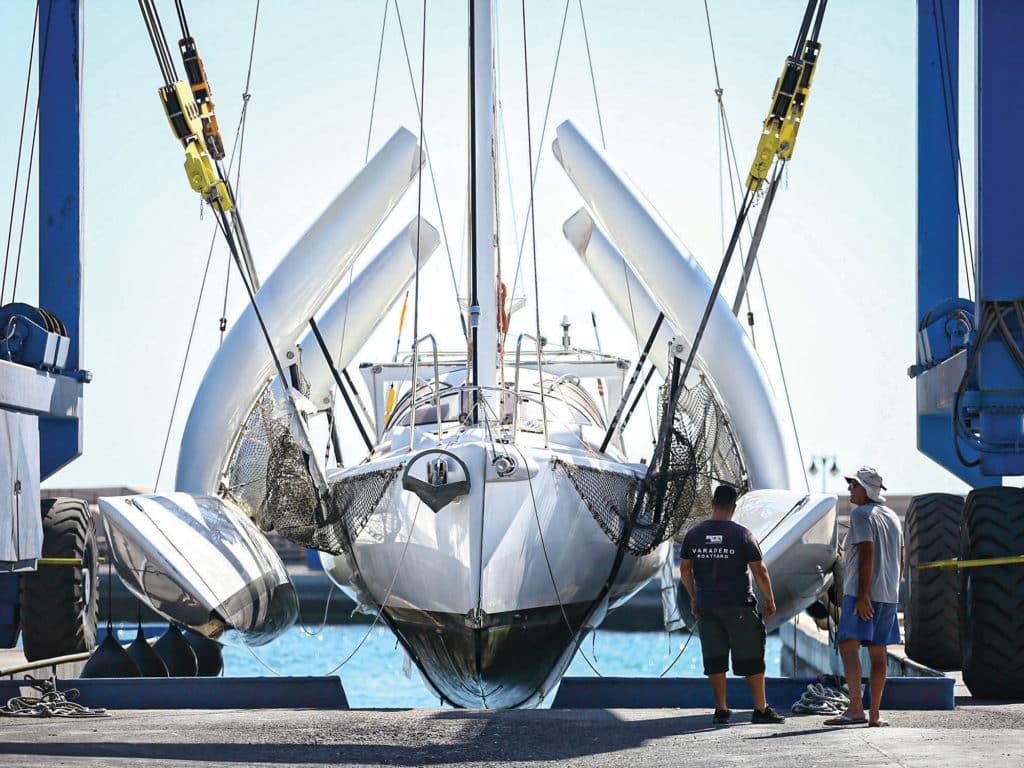
A Dutch woodworker/boatbuilder named Fred Winter built the boat at Woestenburg’s metals and hydraulic factory. Woestenburg’s factory team fabricated all of the hydraulics and metalwork for the boat. Winter, along with Rob Woestenburg, worked on all the construction and interior. The folding system works just like the small Farrier systems, but due to the weight, hydraulic cylinders were added to control folding from behind the wheel.
The boat was built out of strong plank, which was widely being promoted by a boatbuilder in the Netherlands at the time. Strong plank uses PVC foam-cored strips with fiberglass sheathing around those strips. Due to the stiffness of the battens, it takes the minimal amount of building frames to set up the hull. Once the hull is sheathed with the strips, only one or two layers of fiberglass cloth is sufficient to obtain a stiff hull.
After the boat was launched in 1998 and named Gaviota, Woestenburg did not get to sail much, but his son, Rob, logged some miles on the boat. Financial problems forced him to sell the boat to Reinout Vader a year after it was launched.
Vader is a Dutch physicist who developed a pure sine wave inverter. He is the founder of Victron Energy and developer of the WhisperGen Stirling generator. He renamed the tri Sound of Silence, or SOS. Over the course of 20 years, he sailed to the Caribbean, through the Mediterranean, and in the North Sea.
Thunderbird sails fast but is a cruising tri, so she’s a little on the heavy side. She needs approximately 12 knots of apparent wind to really get going. She sails upwind super well. We try to maintain 10 to 13 knots on average, but in the Bay of Biscay and going around Brazil’s Cabo Frio, we saw boatspeeds of up to 17 to 20 knots. James is working now with Bosgraaf to offer for sale a modernized, stripped-out racing version of the boat as a new construction.








